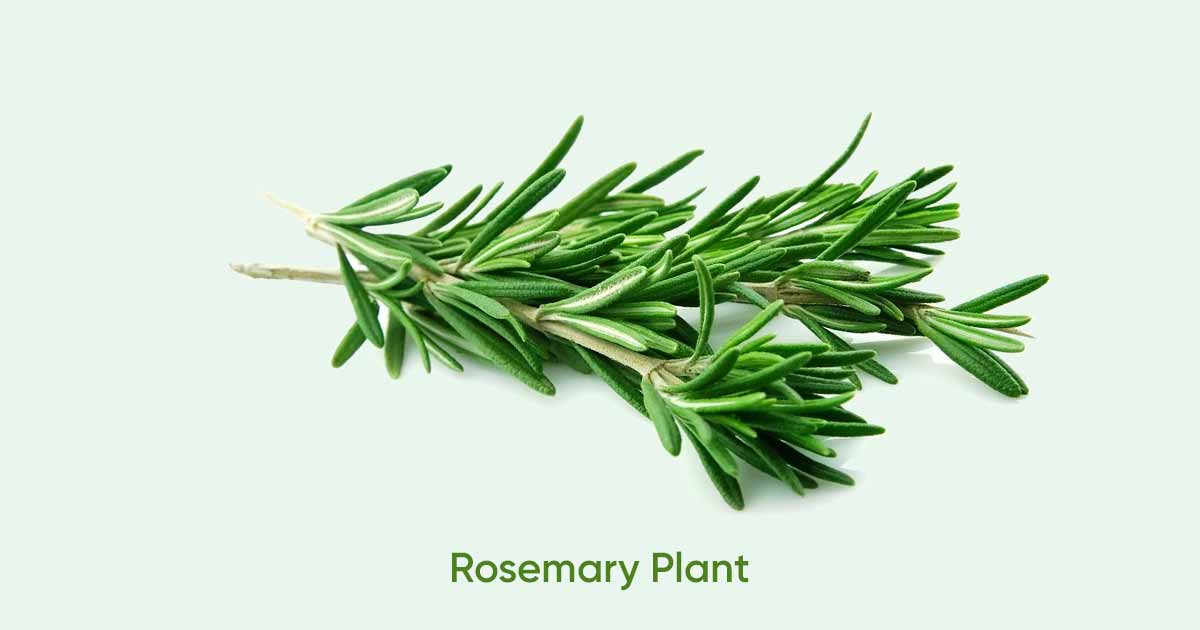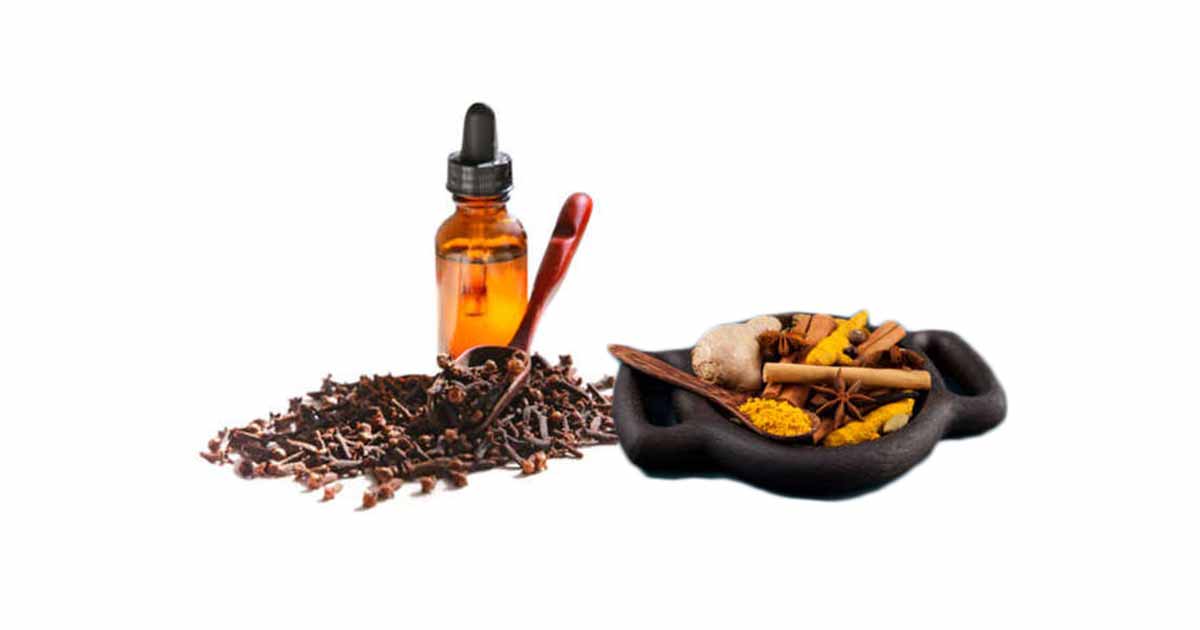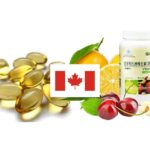Rosemary (Rosmarinus officinalis L.) or Salvia rosmarinus Spenn is an aromatic medicinal plant belonging to the Lamiaceae family (The genus Rosmarinus has since been merged into the genus Salvia). Rosmarinus officinalis is native to the Mediterranean region (Southern Europe, North Africa Asia Minor) but cultivated in most of Europe, Australia, Mexico, the US.
The Latin name, Rosmarinus, comes from ros (“dew”) and marinus (“belonging to the sea”). Common names include compass weed, compass plant, or polar plant. Other names are romarin (French), rosmarin (German), mi die xiang (Mandarin Chinese), romero/rosmario (Spanish), ikleel al-jabal (Arabic), and rosmarino (Italian).
Rosemary is an evergreen perennial shrub, that can reach up to 2.5 m. It has small, linear and needle-like leaves, arranged on opposite sides of the stem. The leaves have pungent flavor, pine-like scent, due to essential oils present, and are ingredients in foods.
The small tubular flowers, which are borne on the angle between the stem and the top of the leaves (upper leaf axils) can be white (‘Albus’), pink (‘Roseus’), blue (‘Tuscan Blue’), purple, or in between. The flowers are used as a rosemary-flavored garnish, or salads. For the best possible flavor, it is better to harvest the plant before flowering.
The plant can be upright (‘Fastigiatus’) or spreading and prostrate (‘Prostratus’). The upright type is used fresh or dried. In the garden, rosemary can be planted with thyme, sage, lavender.
There are many varieties of rosemary for cooking. They include ‘Blue Boy,’ ‘Spice Islands,’ and ‘White’ rosemary, but the ‘Pine Scented’ is very good as it has soft leaves and a wonderful aroma.
Rosmarinus officinalis is used in French herb blends bouquet garni and herbes de Provence. Also, it is used in seasoning roasted vegetables, many Mediterranean dishes, and to top Focaccia bread. An infusion of chopped rosemary in olive oil is used as a dip for bread.
In the cosmetic industry, the essential oils are used as fragrance for soaps, creams, lotions, etc.
Apart from the nutritional and cosmetics uses, rosemary oral preparation is used in folk medicine to treat muscle spasms, dysmenorrhea, and renal colic. It is believed to increase menstrual flow, urine flow, treat indigestion and may have abortifacient effect (causing miscarriage).
Formulations of Rosemary
Rosemary volatile oil is available as external preparation (not to be used orally). The leaves can be used as a dried whole herb, dried powdered extract capsule form.
Alcohol tinctures, teas, and liquid extract can be made from the fresh or dried leaves.
Composition of Rosemary
Rosemary root, flower, and leaves contain varying quantities of flavonoids such as hesperidin, diosmin, luteolin, eriocitrin, genkwanin, soscutellarein 7-O-glucoside, hispidulin 7-O-glucoside.
There are polyphenolic compounds. They include phenolic acids such as rosmarinic acids, caffeic acids, tricyclic diterpenes such as carnosol, carnosic acids. Triterpenoid such as ursolic acid, oleanic acid, and micromeric acid are present.
Essential oils are important constituents of rosemary, and constitute about 1 to 2.5% of the herb. They include α-pinene, β-pinene, eucalyptol, camphor, β-myrcene, 1, 8-cineole, borneol, limonene, linalool, β-caryophyllene, verbenone.
Nutritional Composition in Rosemary
Rosemary contains 67.8 g of water, 3.31 g of proteins, 5.86 g of lipids, 20.7 g of carbohydrates, 14.1 g of dietary fiber.
It has high levels of calcium, potassium, phosphorus, magnesium, sodium, and some quantities of iron, zinc, manganese, and copper.
Rosemary also has high vitamin C, folate, vitamin A, and quantities of riboflavin, thiamine, niacin, pantothenic acid, and Vitamin B-6.
Nutritional Composition of 100g of fresh rosemary
| Nutrition | Quantities |
| Water | 67.8 g |
| Energy | 131 kcal |
| Protein | 3.31 g |
| Total lipid (fat) | 5.86 g |
| Ash | 2.35 g |
| Carbohydrate | 20.7 g |
| Dietary fiber | 14.1 g |
| Calcium | 317 mg |
| Potassium | 668 mg |
| Magnesium | 91 mg |
| Sodium | 26 mg |
| Iron | 6.65 mg |
| Zinc | 0.93 mg |
| Manganese | 0.96 mg |
| Copper | 0.301 mg |
| Phosphorus | 66 mg |
| Vitamin C | 21.8 mg |
| Thiamin | 0.036 mg |
| Riboflavin | 0.152 mg |
| Niacin | 0.912 mg |
| Pantothenic acid | 0.804 mg |
| Vitamin B-6 | 0.336 mg |
| Total folate | 109 µg |
| Vitamin A | 146 µg |
| Fatty acids | 2.84 g |
Dosage:
Rosemary daily intake should not be more than 4 to 6 grams daily.
Health Benefits of Rosemary
Rosemary has antioxidant, anti-inflammatory, anti-ulcerogenic, anticancer, antibacterial, antifungal, antiviral, antithrombotic, and antidepressant effect. It has been used to treat respiratory tract infection, gastrointestinal, menstrual, hepatic, disorders, nervous system disorders.
It also has wound healing effect in animal studies, improving the rate of healing in diabetic and non-diabetic animals.
Anti-inflammatory activity:
Compounds in the rosemary plant such as carnosic acid inhibit NO, a pro-inflammatory agent, while carnosol inhibited immunoglobulin E, neutrophils, and inflammatory cytokines. Carnosol shows promise in treating atopic dermatitis.
Rosmarinus officinalis also contains constituents such as rosmarinic, ursolic, micromeric, oleanolic, carnosol and carnosic acids. These compounds are believed to act together and increase the action of the plant against inflammation.
The triterpenoid such as ursolic acid, oleanic acid, and micromeric acid are believed to be the main anti-inflammatory compounds.
The anti-inflammatory property is utilized in treating arthritis, muscle pains.
Anticancer property:
R. officinalis L. extract may protect the normal cells against DNA damages, cancer proliferation and also induce apoptosis (programmed cell death). Rosmanol, a bioactive compound in R. officinalis L., cause apoptosis in colorectal adenocarcinoma cells. Rosmarinic acid was shown to exhibit chemopreventive activity against anthracene-induced skin cancer.
Other compounds, such as ursolic acid, carnosol, and carsonic acid are powerful antioxidants and may prevent cancer.
Some compounds in the plant may inhibit the formation and proliferation of lung cancer, colorectal adenocarcinoma cells.
Anti-diabetic effect:
The rosemary plant contains many polyphenolic compounds such as flavonoids, phenolic acids, phenolic terpenes, triterpenoids. Carnosic acid, carnosol and rosmarinic acid are the most abundant polyphenolic compounds.
The constituents in the plant has anti-lipolytic activity, and hyperglycemic activity in both in vitro and in vivo studies. It increases glucose uptake and exhibit insulin-like effect.
Antimicrobial activity:
Sienkiewicz et al. evaluated the antimicrobial activity of both basil (Ocimum basilicum, L.) and rosemary (Rosmarinus officinalis, L.) and observed that the essential oils are effective in inhibiting the Gram-negative Escherichia coli.
The essential oil of rosemary is effective against E. coli, Staphylococcus aureus, Bacillus cereus, Staphylococcus aureus, Clostridium perfringens, Aeromonas hydrophila, and Salmonella choleraesuis.
The essential oils responsible for the antimicrobial activities are mainly rosmarinic acid, carnosol, carnosic acid, rosmanol, epirosmanol, isorosmanol, and rosmaridiphenol.
Reduces Body Weight/Dyslipidemia:
R. officinalis decrease hydrogen peroxide levels, and inhibits the activity of 3-hydroxy-3-methylglutaryl coenzyme A(HMG-CO) reductase. Polyphenols such as rosmarinic, luteolin, hydrocafeic and caffeic acids are powerful antioxidants also prevent oxidative damage, and reduces cholesterol levels.
They may also increase fecal excretion of total cholesterol and bile acids.
Rosmarinus officinalis also reduced total cholesterol, triglyceride, low density lipoprotein, and increased high density lipoprotein (HDL-c) levels.
Relieves stress and improves memory:
R. officinalis L. has antioxidant, and anti-inflammatory. It may also help to reduce the inflammatory mediator’s levels, control denaturation of protein, and decrease the dopaminergic and serotonergic neuronal damages.
In studies by y Abadi et al., it was suggested that rosemary may provide anxiolytic and sedative effect just as diazepam. This may be as a result of flavonoids such as apigenin, and luteolin, that works as ligands for central nervous system receptors.
It is also used in aromatherapy with other essential oils like lavender to improve memory, reduce stress, cortisol levels and reduce anxiety levels.
Antinociceptive effect:
In a lab study using male albino rabbits, R. officinalis L. normalised the weight of liver, and kidney. It has a protective effect on the body against damage caused by lead in the liver.
The extract prevented oxidative stress and lipid peroxidation caused by exposure to the lead.
Ultraviolet (UV) Protection:
UV radiation may increase the production of reactive oxygen species, that may damage the DNA and cells. A combination of citrus and rosemary extract was tested, and it showed protection against UV radiation damage.
It prevented the formation of radicals, and damage to DNA. The rosemary extract inhibits UV-induced metalloproteinase-1, an enzyme that cause collagen 1 digestion, when we are exposed to sunlight.
Myocardial infarction:
In a study using male Wistar rats, to test for remodeling after myocardial infarction. R. officinalis leave’s supplementation improved diastolic function, reduced muscle hypertrophy, and caused morphological and functional changes in the heart of infarcted animals.
It reduced oxidative stress, and increased β-oxidation of fatty acids, and respiratory chain performance.
Treatment of alopecia:
Alopecia is a chronic dermatological disorder that cause chronic hair loss. It may be caused by stress, diet, or excess testosterone in the blood capillaries.
In a study, topical treatment of mice with testosterone-induced alopecia using hydroalcoholic extracts of rosemary resulted in hair growth. The extract showed strong inhibition of the binding of dihydrotestosterone (DHT) to its receptor.
Antifungal property:
Rosmarinus officinalis has activity against dermatophytes that cause topical diseases. The essential oils of rosemary inhibit Candida albicans, Microsporum gypseum and Trichophyton rubrum at certain concentration.
Indigestion:
The German Commission E approves of the use of rosemary leaf for the treatment of indigestion (dyspepsia).
Antiaging effect:
The rosemary extract has antioxidant compounds that neutralize reactive oxygen species, similarly to vitamin E. The activity of antioxidants prevents ageing, cell and tissue damage and death.
Possible Drug Interactions
Rosemary may interact with some medications, such as:
- Antihypertensive drug class, ACE inhibitors (captopril, lisinopril, elaropril) interfering with the action.
- Has diuretic effect and may increase the effect of diuretic drugs such as furosemide, hydrochlorothiazide.
- May lead to increase in the levels of lithium, as rosemary has diuretic effect, causing the body to lose water and increase the levels of lithium.
- May affect blood clotting and how antiplatelet and anticoagulant drugs such as warfarin, aspirin, clopidogrel works.
- Can affect sugar levels and the effect of anti-diabetic medications.
Side Effects
Rosemary leaf is considered safe, but may cause minor side effects such as vomiting, spasms, coma, pulmonary edema when taken in large quantities due to the essential oil content. Patients with high blood pressure, ulcerative colitis, ulcer, or Crohn’s disease may avoid taking rosemary.
As this herb is believed to cause miscarriage, it is advisable to avoid in pregnancy.
Rosemary oil should not be ingested orally, rather it should be used externally.
References:
- https://aggie-horticulture.tamu.edu/wp-content/uploads/sites/10/2013/09/EHT039.pdf
- https://pdfs.semanticscholar.org/d5ca/78c34fbe0b24748f8f4c19bc46b4f96114b6.pdf
- https://jbiomedsci.biomedcentral.com/articles/10.1186/s12929-019-0499-8
- https://www.mccormickscienceinstitute.com/resources/culinary-spices/herbs-spices/rosemary
- https://www.mountsinai.org/health-library/herb/rosemary









